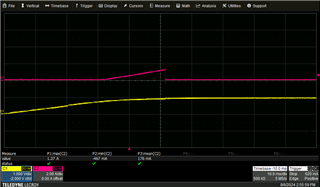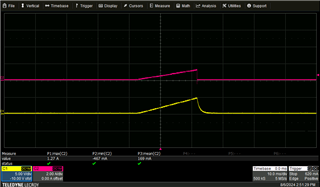Tool/software:
I observed this behavior on both the EVM and the board I designed. When I have a 4ohm load on the output and apply anything above 12.2V, the LM73100 fails during startup and the output stays off. I checked Iin, OVLO and UVLO pins and saw no unusual behaviors. Waveforms are below.
Another observation is, when I slow down the slew rate of the input power supply to less than 20V/s, then startup will be successful. I would prefer to solve this so that the part will startup successfully regardless of load condition or input voltage slew rate.
C1: OVLO, C2: Iin

C1: ULVO, C2: Iin

C1: Vout, C2: Iin


